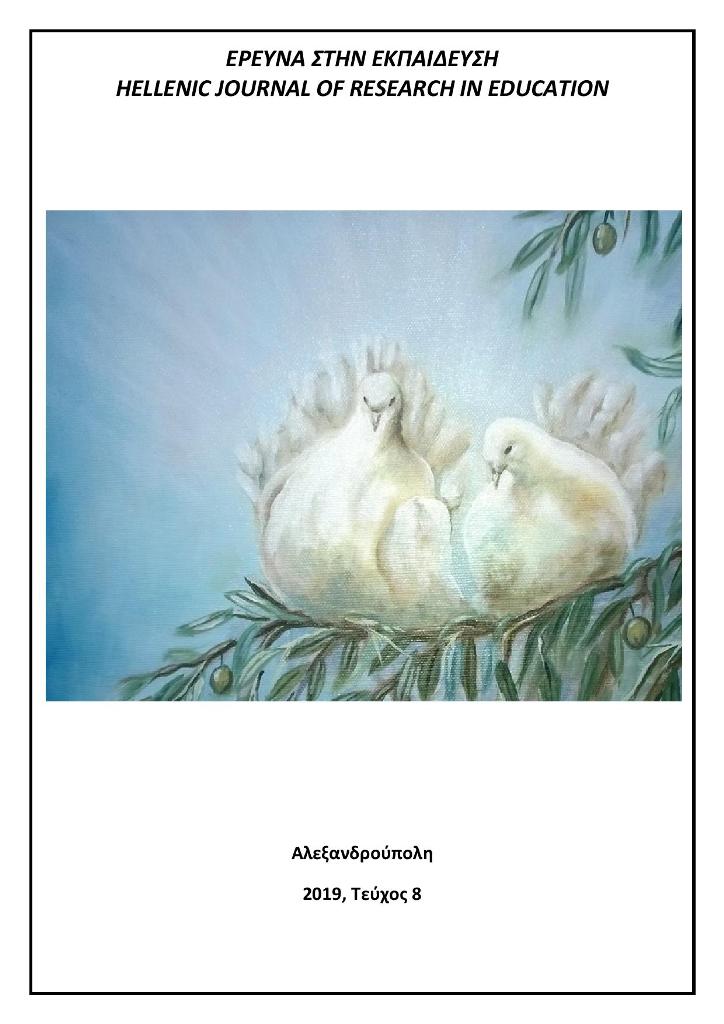Η αξιολόγηση της κινητικής ανάπτυξης με δύο διαφορετικές δέσμες δοκιμασιών σε παιδιά προσχολικής ηλικίας

Περίληψη
Σκοπός της παρούσας έρευνας ήταν: α) η αξιολόγηση της κινητικής ανάπτυξης και των διαταραχών του κινητικού συντονισμού παιδιών προσχολικής ηλικίας με δύο κατάλληλες αναπτυξιακές δέσμες κινητικών δοκιμασιών, και β) ο έλεγχος της σχέσης αυτών των δύο κινητικών δοκιμασιών (tests), έτσι ώστε να προβλέψουμε την επίδοση ενός ατόμου σε κάποια από τις δύο δέσμες, από την τιμή της άλλης. Το δείγμα της έρευνας απαρτίζονταν από εκατόν ογδόντα έξι παιδιά (Ν = 186), 101 αγόρια και 85 κορίτσια, ηλικίας 46 έως 78 μηνών, τα οποία φοιτούσαν σε δημόσια νηπιαγωγεία του Νομού Ιωαννίνων και επιλέχθηκαν με τυχαία δειγματοληψία. Το δείγμα χωρίστηκε σε τρεις ηλικιακές ομάδες των τεσσάρων, πέντε και έξι ετών. Προηγήθηκε η ενημέρωση των εκπαιδευτικών αρχών και των γονέων των παιδιών και αφού τηρήθηκαν οι αρχές της επιστημονικής ερευνητικής δεοντολογίας έγινε ο έλεγχος της κινητικής ανάπτυξης των παιδιών με δύο κατάλληλες αναπτυξιακές συστοιχίες παιγνιωδών κινητικών δοκιμασιών (M-ABC-test, 2nd Edition των Sugden, & Henderson & Barnett, 2007 και το MOT-test των Zimmer & Volkamer, 1987). Κατασκευάστηκαν πίνακες συχνοτήτων και των αντίστοιχων ποσοστών τους, για τους παράγοντες φύλο και ηλικία και εφαρμόστηκε ο συντελεστής συσχέτισης του Pearson για τις μεταβλητές των δύο συστοιχιών κινητικών δοκιμασιών και ανάλυση παλινδρόμησης για τη συνολική επίδοση του κάθε παιδιού στις δύο συστοιχίες (ΜΟΤ & M-ABC-2). Τα αποτελέσματα της παρούσας έρευνας έδειξαν ότι η πλειονότητα των παιδιών (93,6%) - και στις τρεις ηλικιακές ομάδες που εξετάστηκαν - παρουσίασαν καλές επιδόσεις στην κινητική τους ανάπτυξη. Συγκεκριμένα, το 41,9% των παιδιών παρουσίασε καλές επιδόσεις, δηλαδή, τιμές που βρίσκονται πάνω από το επίπεδο των φυσιολογικών τιμών των επιδόσεων που είχε η πλειονότητας (51,7%) του δείγματος. Όμως, τα αποτελέσματα και στις δύο δέσμες έδειξαν ένα μικρό αριθμό δώδεκα παιδιών (6,4%) με κινητικές δυσκολίες και αναπτυξιακές διαταραχές κινητικού συντονισμού. Τα αγόρια (Ν=9) εμφάνισαν μεγαλύτερη συχνότητα κινητικών δυσκολιών σε σχέση με τα κορίτσια (Ν=3) και αναλογικά 1 προς 3. Το πόρισμα αυτό συμφωνεί με τα πορίσματα αντίστοιχων διεθνών και ελληνικών ερευνών. Υπάρχει μια πολύ ισχυρή αρνητική συσχέτιση μεταξύ των επιδόσεων των δύο κινητικών δοκιμασιών η οποία οφείλεται στο διαφορετικό τρόπο βαθμολόγησης τους, αλλά όμως, όταν γνωρίζουμε την επίδοση της μίας δέσμης κινητικών δοκιμασιών μπορούμε να προβλέψουμε και την επίδοση της άλλης. Η ύπαρξη έντονων κινητικών δυσκολιών - εφόσον δεν συντρέχουν περιπτώσεις νευρολογικών προβλημάτων στα παιδιά του δείγματος μια και το γεγονός αυτό ήταν προϋπόθεση της έρευνας – μπορεί να οφείλεται σε περιβαλλοντικά αίτια όπως ελλείμματα στα βιώματα παιχνιδιού και στις κινητικές εμπειρίες λόγω του σύγχρονου τρόπου ζωής. Αυτά τα παιδιά στη συνέχεια θα χρειαστούν υποστήριξη και ενθάρρυνση μέσα από τη συμμετοχή τους σε αντίστοιχα προγράμματα κινητικών δραστηριοτήτων με σκοπό την εξισορρόπηση του κινητικού ελλείμματος των δεξιοτήτων τους. Η αναγκαιότητα και η αξία του προληπτικού ελέγχου της κινητικής ανάπτυξης και το κινητικού συντονισμού παιδιών της πρώιμης παιδικής ηλικίας τεκμηριώνεται από τα αποτελέσματα της παρούσας έρευνας.
Λεπτομέρειες άρθρου
- Πώς να δημιουργήσετε Αναφορές
-
Ζάραγκας (Zaragas) Χ. (Harilaos), & Γκατζόγια (Gkatzogia) Δ. (Dimitra) Ν. (Nikolaos). (2019). Η αξιολόγηση της κινητικής ανάπτυξης με δύο διαφορετικές δέσμες δοκιμασιών σε παιδιά προσχολικής ηλικίας. Έρευνα στην Εκπαίδευση, 8(1), 145–162. https://doi.org/10.12681/hjre.20808
- Τεύχος
- Τόμ. 8 Αρ. 1 (2019)
- Ενότητα
- Άρθρα

Αυτή η εργασία είναι αδειοδοτημένη υπό το CC Αναφορά Δημιουργού – Μη Εμπορική Χρήση – Παρόμοια Διανομή 4.0.
Τα πνευματικά δικαιώματα των άρθρων του περιοδικού ανήκουν στους συγγραφείς. Τα άρθρα διατίθενται με άδειες Creative Commons CC-BC-SA 4.0



